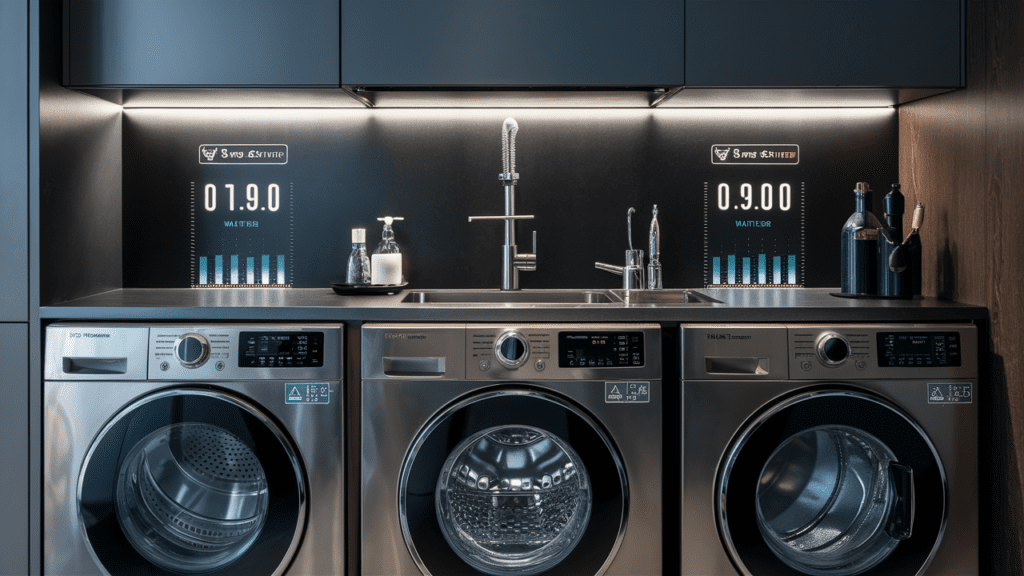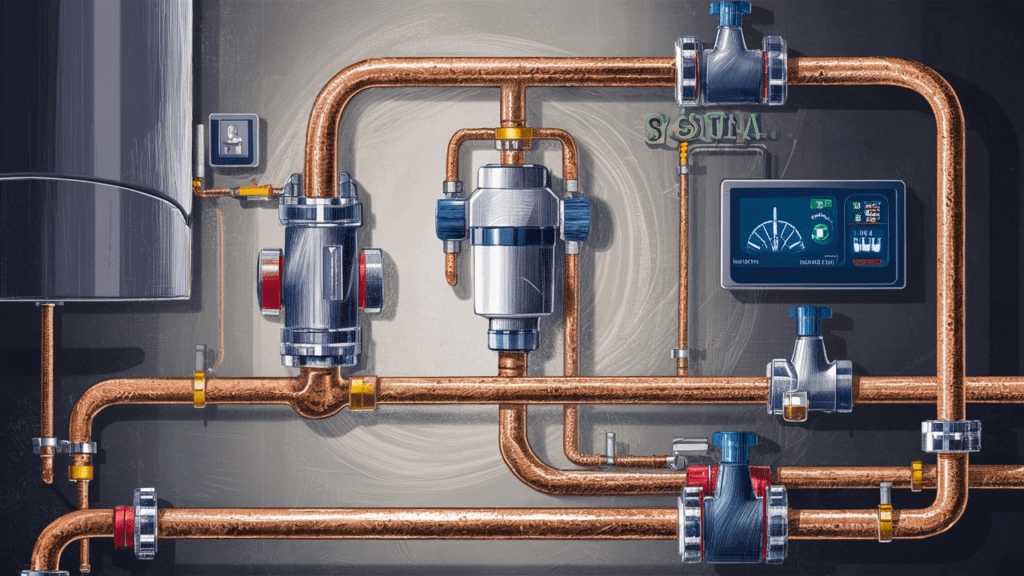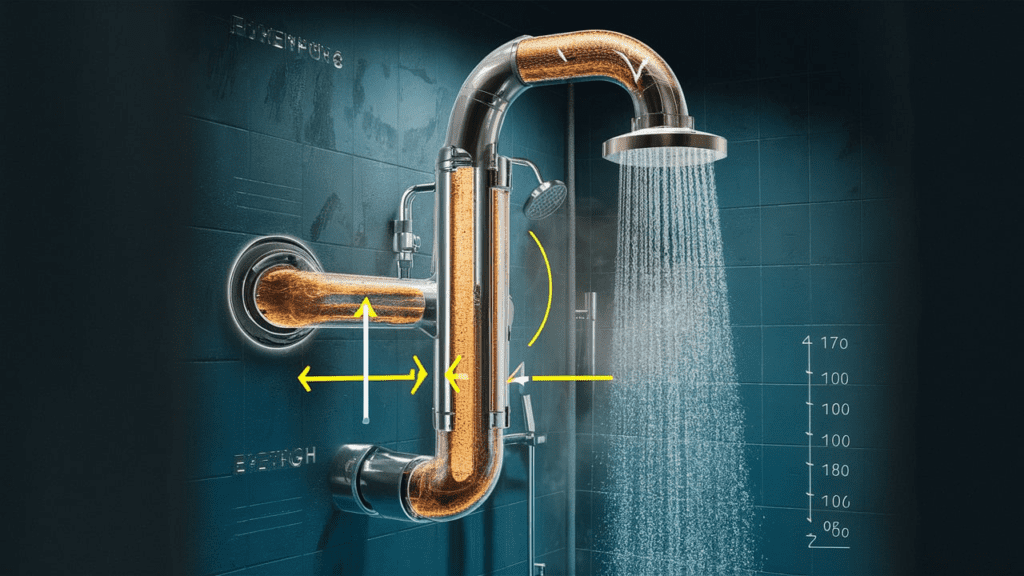As an interior designer with experience creating beautiful, functional spaces, I’ve seen firsthand how small changes can make a big impact – not just on aesthetics, but on our environment and wallets too.
Today, I’m excited to share with you my top water-saving home improvements that go beyond the usual low-flow fixtures. These innovative solutions will not only help you conserve water but also add a touch of eco-chic to your home. So, let’s dive in and explore how we can make every drop count!
Introduction: The Ripple Effect of Water Conservation
Before we plunge into our list, let’s take a moment to appreciate the importance of water conservation. In my years of designing homes, I’ve seen a growing awareness among homeowners about the need to use water wisely. It’s not just about saving money on utility bills (although that’s a nice bonus); it’s about being responsible stewards of our planet’s most precious resource.

While low-flow fixtures like showerheads and faucet aerators are great starting points, they’re just the tip of the iceberg. Today, we’re going to explore some less common but equally impactful ways to save water at home. Trust me, some of these solutions are so clever and stylish, that you’ll wonder why you didn’t think of them sooner!
1. Smart Irrigation Systems: Watering with Wisdom


Let’s start in the garden, shall we? I remember working on a project for a client with a beautiful but water-hungry lawn. We installed a smart irrigation system, and the results were astounding.
Weather-based controllers: These nifty devices use local weather data to adjust watering schedules. Imagine a sprinkler system smart enough to skip watering when it’s raining or increase watering during a heatwave. It’s like having a personal meteorologist for your garden!
Drip irrigation for gardens: For flower beds and vegetable gardens, drip irrigation is a game-changer. It delivers water directly to the plant roots, reducing evaporation and runoff. I once designed a Mediterranean-style patio with a drip-irrigated herb garden – it was not only water-efficient but also a fragrant and beautiful focal point.
2. Greywater Recycling Systems: Give Your Water a Second Life
Greywater recycling is a concept that fascinates me. It’s the practice of reusing water from sinks, showers, and washing machines for non-potable purposes like toilet flushing or garden irrigation.


Simple DIY systems: For the handy homeowner, there are simple greywater diversion systems that can route water from your washing machine to your garden. I helped a client set one up, and her flowers have never looked better!
Professional installations: For a more comprehensive approach, professional greywater systems can be integrated into your home’s plumbing. These can be quite stylish too – I once incorporated a visible greywater filtration system as an eco-friendly art piece in a modern bathroom design.
3. Rainwater Harvesting: Making the Most of Mother Nature
Rainwater harvesting is like giving your home its own water reservoir. It’s a practice as old as civilization itself but with modern twists.


Rain barrels: These are a simple and affordable starting point. I love recommending decorative rain barrels that double as garden features. Imagine a terracotta-colored barrel that complements your Mediterranean landscape design!
Advanced collection systems: For those ready to go all-in, larger underground cisterns can collect substantial amounts of rainwater. I worked on a project where we integrated a 5000-gallon underground tank, providing water for garden irrigation and toilet flushing year-round.
4. Drought-Resistant Landscaping: Beauty Without the Thirst
Xeriscaping is a landscaping approach that reduces or eliminates the need for supplemental water from irrigation. It’s not just about cacti and rocks (although those can be beautiful too!).


Native plant selection: Using plants native to your area can create a lush, vibrant landscape that thrives on natural rainfall. In a recent project in the Southwest, we created a stunning desert garden using local succulents and wildflowers.
Mulching techniques: Proper mulching is like giving your soil a cozy blanket that retains moisture. I always recommend organic mulches like bark or compost – they look natural and feed the soil as they decompose.
5. Water-Efficient Appliances: High-Tech Helpers
When it comes to appliances, efficiency is key. And it’s not just about Energy Star ratings anymore.


High-efficiency washing machines: Look for models with load-sensing technology that adjusts water levels based on the size of your laundry load. I recently installed one in a client’s home that uses steam to boost cleaning power while reducing water usage.
Dishwashers with water-saving features: Modern dishwashers can be surprisingly water-efficient. I love models with half-load options or sensor-based cycles that adjust water usage based on how dirty the dishes are.
6. Leak Detection Systems: Catching Drips Before They Become Floods
Leaks can waste an enormous amount of water if left unchecked. Modern technology has given us some fantastic tools to catch them early.


Smart water monitors: These devices attach to your main water line and can detect even tiny leaks, sending alerts to your smartphone. I installed one in my own home and was amazed to discover a small leak in an outdoor spigot I rarely used.
DIY leak detection methods: For a low-tech approach, I always advise clients to regularly check their water meter and perform simple tests like putting food coloring in the toilet tank to check for silent leaks.
7. Pressure-Reducing Valves: Gentle Flow, Big Savings
High water pressure might feel nice in the shower, but it can lead to significant water waste and even damage your plumbing over time.


How they work: Pressure-reducing valves lower the water pressure coming into your home to a more manageable level. It’s like giving your plumbing a relaxing massage!
Installation considerations: These valves are typically installed where the main water line enters your home. In older homes, I often recommend having a plumber check the existing pressure and install a valve if needed.
8. Hot Water Recirculation Systems: Instant Warmth, Less Waste
We’ve all done it – let the shower run until the water gets hot. But did you know this can waste gallons of water daily?


Types of recirculation systems: There are two main types – dedicated loop systems and under-sink pumps. For retrofit situations, I often recommend under-sink pumps as they’re easier to install.
Energy-saving considerations: While these systems save water, they can use extra energy. Look for models with timers or on-demand activation to balance water and energy savings.
9. Composting Toilets: The Ultimate in Water-Free Waste Management
Now, I know what you’re thinking – composting toilets? In my beautiful home? But hear me out. Modern composting toilets can be surprisingly sleek and odor-free.


How they work: These toilets use little to no water, instead relying on natural decomposition processes to break down waste. Some models even produce usable compost for your garden!
Regulations and considerations: Before installing a composting toilet, check local regulations. They’re not legal everywhere for primary use, but can often be installed in addition to traditional toilets.
10. Shower Heat Exchangers: Recapturing Wasted Warmth
This is a technology that never fails to impress my clients. Shower heat exchangers recover heat from the warm water going down the drain to preheat incoming cold water.


Installation options: These can be installed horizontally under the shower or vertically in a basement. In a recent bathroom remodel, we incorporated a horizontal unit right into the shower base design.
Energy and water-saving potential: By preheating incoming water, these systems can reduce water heating costs and potentially allow for a smaller water heater.
11. Pool Covers and Efficient Pool Systems: Splash Sustainably
For homes with pools, water conservation is crucial. An uncovered pool can lose inches of water per week to evaporation.


Reducing evaporation: Automatic pool covers not only save water but can also be a sleek design feature. I love recommending covers that tuck away into hidden compartments when not in use.
Efficient filtration systems: Variable-speed pool pumps can significantly reduce energy use. Pair this with efficient filters and you’ve got a winning combination for sustainability.
12. Water-Saving Habits and Behavioral Changes: Small Actions, Big Impact
Sometimes, the most impactful changes are the simplest. Encouraging water-saving habits can make a huge difference.
Short showers vs. baths: I always recommend designing inviting shower spaces that encourage quick, refreshing showers rather than long soaks.
Running full loads: When designing laundry rooms, I like to include sorting stations to make it easier to accumulate full loads before washing.
13. Eco-Friendly Car Washing Methods: Clean Cars, Clear Conscience
Car washing can use a lot of water, but there are ways to keep your ride shiny without waste.


Waterless car wash products: These spray-on, wipe-off products can be a great option for quick cleans. I’ve even designed outdoor storage solutions specifically for eco-friendly car care products.
Capturing and reusing car wash water: For DIY car washers, consider setting up a system to capture and filter runoff for use in the garden.
14. Indoor Plants for Humidity Control: Natural Moisture Management
Plants aren’t just beautiful – they can help manage indoor humidity, reducing the need for energy-hungry humidifiers.


Best plants for moisture retention: Peace lilies, Boston ferns, and spider plants are great options. I love incorporating these into bathroom designs for natural humidity control.
Care and maintenance tips: Group plants together to create a microclimate and use pebble trays for added humidity without overwatering.
15. Water Audits and Conservation Plans: Knowledge is Power
Understanding your water use is the first step to reducing it.


Professional water audits: These can provide detailed insights into your water use patterns. I often recommend them to clients undertaking major renovations.
DIY water use assessment: Encourage regular meter readings and bill analysis. I’ve designed utility spaces with easy-to-read displays for tracking resource use.
16. Innovative Water-Saving Technologies: The Cutting Edge of Conservation
The world of water conservation is constantly evolving. Here are some exciting new technologies to watch:
Hydroponic gardening systems: These soil-free growing systems use significantly less water than traditional gardening. I’ve incorporated sleek, modern hydroponic units into kitchen designs for year-round fresh herbs.
Atmospheric water generators: These devices literally pull water out of thin air! While currently best suited for humid climates, they’re an exciting technology to watch.
17. Financial Incentives and Rebates: Saving Water, Saving Money
Many areas offer incentives for water-saving home improvements.


Local water conservation programs: Check with your local utility companies for rebates on water-efficient appliances or landscaping.
Calculating long-term savings: When proposing water-saving improvements to clients, I always include a cost-benefit analysis showing long-term savings on water bills.
Conclusion: Every Drop Counts
As we’ve explored these water-saving home improvements, I hope you’ve been inspired to think beyond the basics of water conservation. From high-tech solutions like smart irrigation systems to simple habit changes, every action counts in our journey towards more sustainable living.
Remember, water conservation doesn’t mean sacrificing style or comfort. As an interior designer, I’m constantly amazed by how beautifully these water-saving solutions can be integrated into home design. Whether it’s a sleek greywater system that doubles as a conversation piece or a lush, drought-resistant garden that’s the envy of the neighborhood, water conservation can enhance both the function and aesthetics of your home.
So, I encourage you to look at your home with fresh eyes. Where can you implement these water-saving improvements? How can you make conservation a beautiful, integral part of your living space? The possibilities are as vast as the ocean – and every drop you save helps keep that ocean thriving for generations to come.
Now, if you’ll excuse me, I’m off to design a bathroom with a heat-exchanging shower and some beautiful air-purifying plants. Because in my world, sustainability and style go hand in hand. Happy water saving, everyone!



